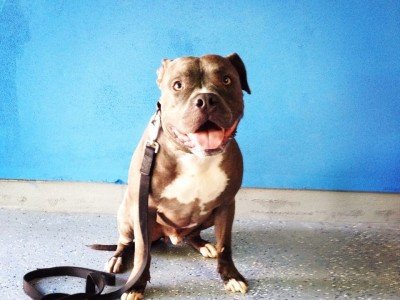The term separation anxiety is often misunderstood. True clinical separation anxiety is not common. Dogs do undergo stress and anxiety in response to the owner leaving the dog home alone: in other words when the dog is separated from the pack.
Dogs need to be properly conditioned to being left alone. Otherwise, behaviors such as barking, destructiveness, escape attempts, and even housebreaking accidents may occur. Giving a dog too much, or the wrong type of attention can lead to such stress-related behaviors.

Examples include:
- Petting the dog too much.
- Consistently allowing the dog to sleep in your bed.
- Petting and playing with the dog when they demand it.
- Petting to calm the dog down.
- Over enthusiastically greeting the dog upon arriving home.
Dog Dependence and Neediness
These actions can make the dog too dependent and create neediness. This neediness cannot be fulfilled when the dog is alone. If the dog is experiencing stress when left alone, it will do things that he/she should not do. It is important to keep a balance so that the dog does not feel as alone when you are gone. Below are some suggestions for easing the
dog’s stress. It is imperative that a dog receives positive, quality attention.
Dogs are social creatures and need play time. It is important that the owner set the beginning and end time for the game. The dog should not demand that the game be played. Have a specific fetch toy and take it out only when it is time to play. If a dog is good for 6 fetches, stop at 4. Gradually add a repetition on each day until the dog will do 2 dozen back and forth. Put the toy away when the game is over. This will ensure that the dog stays motivated and doesn’t lose or destroy the toy. Have chew toys for the dog when not playing. Do not play fetch with the dog’s chew toys as that’ll reinforce the dog demanding play at the wrong times. Controlling when to and what to play with, will put you in the role of leader as well as prevent dominance issues.
Preventing Stress in Your Dog
Diet, walks, and the home environment also play a role in preventing stress in the dog.
Feed the dog twice per day. This will satisfy the dog as well as prevent possible mood swings due to low blood sugar.
Calmly walk the dog twice a day for 20 minutes. On the walks, you can also include some basic obedience training. Take tiny soft treats and lure the dog to sits and downs. This also encourages the dog to keep their focus on you.
In the home environment when dog’s alone, be sure to leave the radio on for the dog. It’ll buffer outside noises and make the house seem less empty. Stick to an easy listening station so as not to excite the dog. Also, leave a light on if it will be getting dark. Lastly, maintain a calm presence around the dog the last 30 minutes before you leave the house so as not to excite the dog and possibly induce stress. Again these are preventive measures. If you cannot resolve separation problems, seek professional help.


